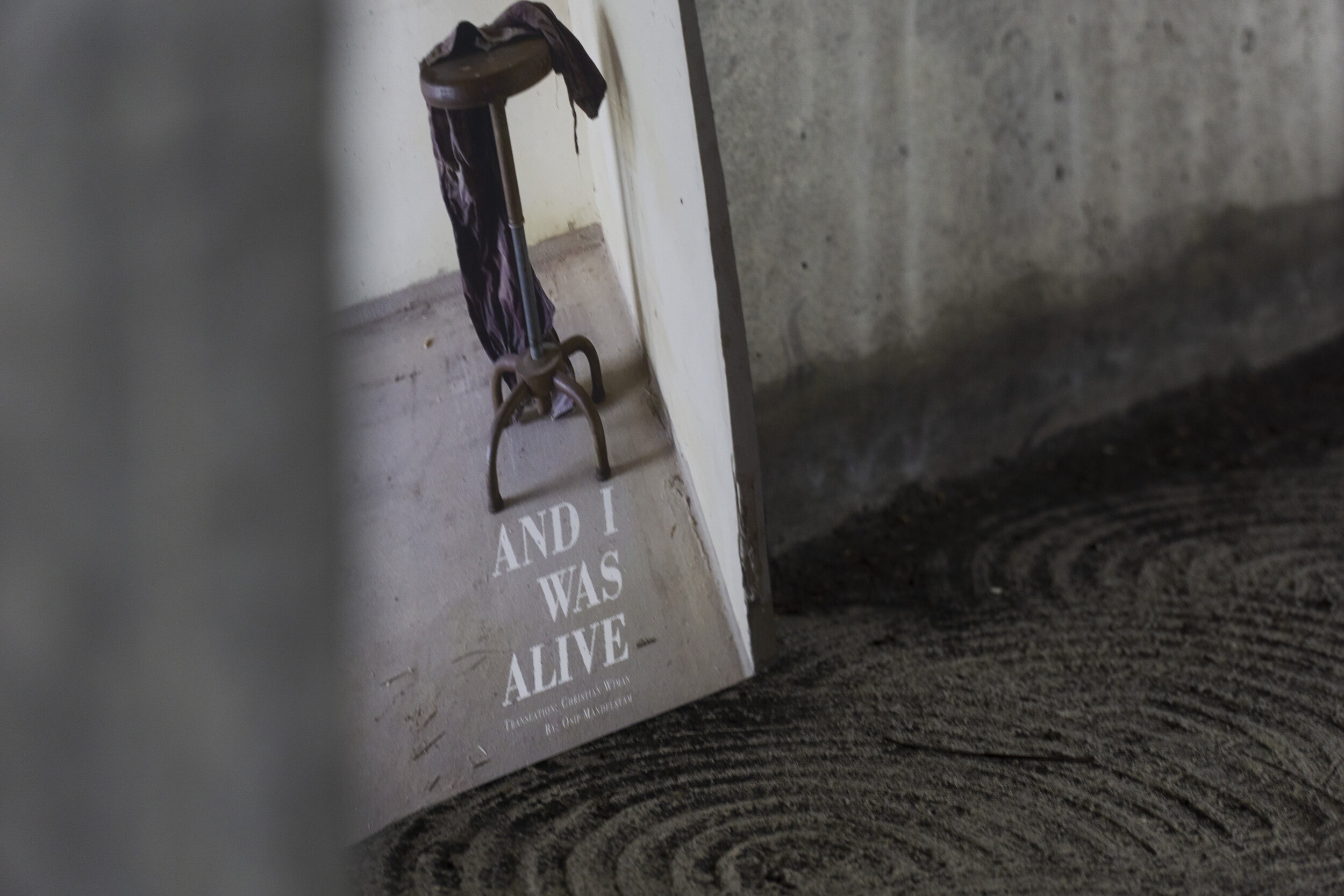Poetry Broadside
typography/photography
the story
Osip Mandelsten was a famous poet from Soviet Russia. His poems were quite controversial, and usually were very political in nature. He happened to make an enemy of Stalin, and was exiled and arrested. He eventually died in prison, however continued writing poetry even when incarcerated.
One of his last poems (if not the last) ever written, “And I was Alive,” was composed while he was held captive en route to one of Stalin’s infamous gulags. The poem champions life as it is, and remembers freedom in sepia tones. The prose champions love lost wonders of the world and is full of passion, yet forgotten slowly by the sands of time. Evocative of once loved items left out to rot away, “And I was Alive” endures as a reminder to enjoy the haunting beauties of life, lest one end up forgotten in time.
project synopsis
The poetry broadsides collection is created annually by the combined efforts of San Diego State University’s poetry department and department of art and design. Designers team up with poetry masters and create broadside posters representing the words. Armed with nothing more than a short poem and a little help in deciphering its meaning, the designers must draw forth an image compelling enough to be published in the anthology.
The poem is a celebration of freedom lost, and exudes imagery of life and love lost, a sort of nostalgic longing. The original photo interacts with the text by creating the sort of image of a forgotten space, with a silhouette sitting on the chair in the form of dark text. The broadside was chosen over others to be published in the 2017 edition of Poetry International's anthology.
The text of the broadside focuses on drawing out the distressed nature of the poem, while still referencing the peace of acceptance. The bottom text of the broadside is a distressed form of Bodoni, while the body text is a condensed Gill Sans with emphasis drawn through use of color sampled from the image and bold text.




